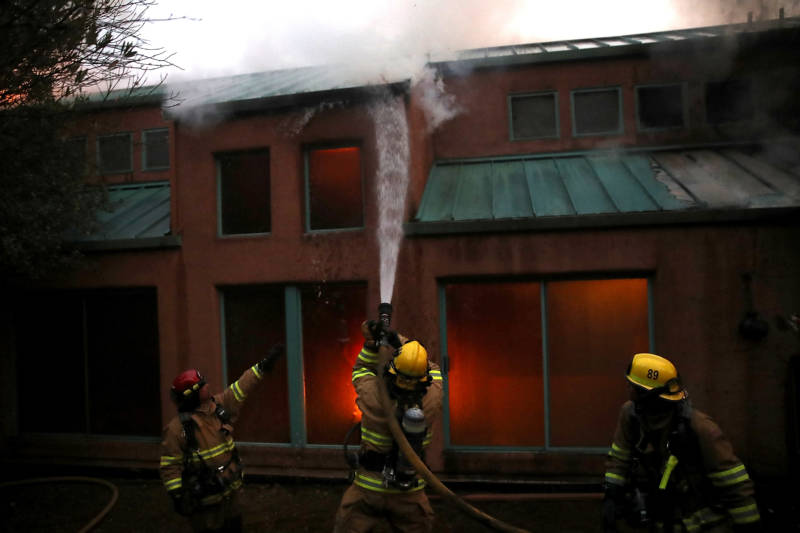Firefighters who battled the deadly Tubbs Fire in 2017 left the scene with abnormal levels of mercury and other dangerous chemicals in their blood, according to new findings announced on Tuesday.
The San Francisco Firefighters Cancer Prevention Foundation (SFFCPF) and researchers at UC Berkeley analyzed blood and urine samples of roughly 150 first responders three weeks after they had battled the blaze, and compared them to samples from other firefighters who hadn’t been on the frontlines.
Many of those who fought the fire had elevated levels of the neurotoxin mercury and perfluoroalkyl substances (PFAS) in their blood, chemicals found in common household items that are also, ironically, present in protective gear and foam commonly used as fire retardant.
The findings suggest that the chemicals may have been released from material burning within buildings and potentially by the firefighters’ gear itself.
In addition, the firefighters used lighter, less restrictive wildland firefighting gear instead of the heavy air tanks and face masks typically used while fighting fires in cities. The sparse gear left responders vulnerable to toxic fumes from the hazardous fuels and chemicals that burned, investigators found.
“This preliminary data suggests that it’s worth looking at more and that we need to inform strategies to better protect firefighters to reduce their exposure to these compounds,” said Rachel Morello-Forsch, a UC Berkeley environmental science professor who led the study and is also examining specific health impacts on female firefighters.
The Tubbs Fire burned for more than three weeks in October 2017, killing 22 people and destroying thousands of homes in Sonoma and Napa Counties.
San Francisco Fire Chief Jeanine R. Nicholson said she was not at all surprised by the results of the study.
“We have done some studies within the department and we’ve found elevated levels of chemicals in our bloodstreams compared to the general public,” she said. “The constant exposure up there [in Sonoma], it does not surprise me at all that we have higher levels of chemicals in our bloodstream.”
SFFCPF President Tony Stefani agreed.
“The question is, what can be done to better protect the men and women who are fighting these fires?” he asked.

